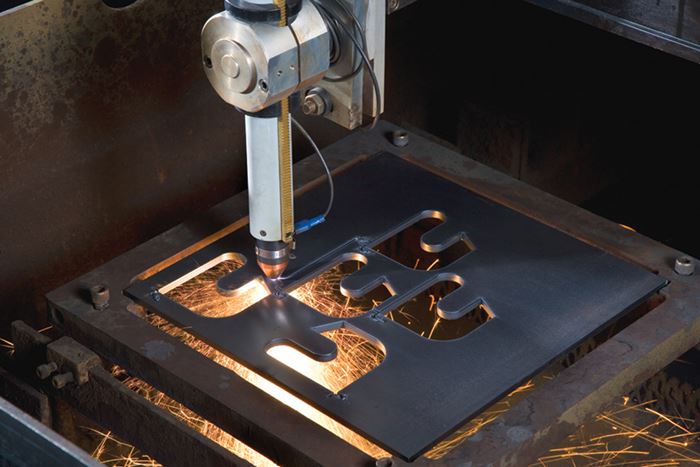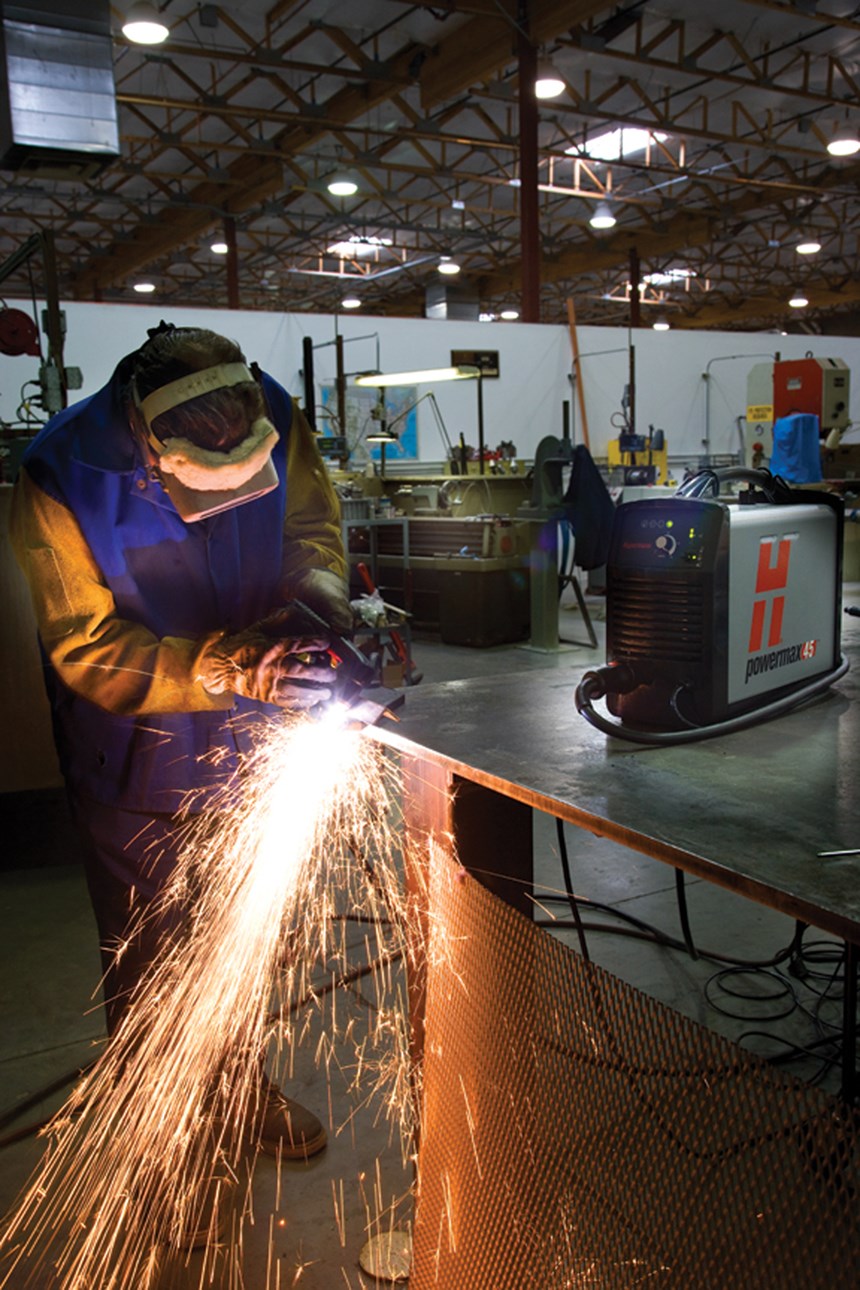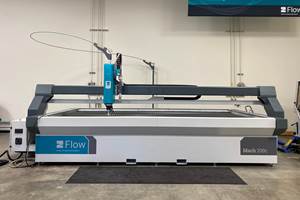How To Choose A Plasma Cutter
Contributed by Hypertherm (West Lebanon, New Hampshire). The company designs and manufactures plasma cutting systems for use in a variety of industries such as shipbuilding, manufacturing, and automotive repair. Its product line includes handheld and mechanized plasma systems and consumables, as well as CNC motion and height controls.
Share




There are a number of factors to consider when purchasing a plasma cutting tool. They include cut capacity, cut quality, reliability, duty cycle, ease of use and operating cost. The first step is to figure out what type of plasma cutting you plan to do. Are you planning to cut by hand or on a table? Some plasma cutting tools are capable of doing both, going from handheld to mechanized cutting and back again. A few systems include a CNC interface and internal voltage divider, providing more options for mechanized applications.
Once you know what type of plasma cutting you are going to do, then you should consider the thickness of the material you plan to cut. The general rule is to choose a system with a recommended cut capacity that matches the material thickness you plan to cut 80 percent of the time. For example, if you mainly plan to cut ½-inch thick metal, and only occasionally cut metal that’s a little thicker (say 3/4 of an inch), then you can choose a ½-inch system.
Cut quality is another important consideration. Not only does it impact the quality of your finished piece, it saves time in later stages of production. Ideally, you want a clean, smooth edge so you don’t spend a lot of time on secondary work. In addition to smooth, clean cuts, better plasma cutting systems create a much narrower kerf (cut width), which means more precise cuts and less wasted metal.
You should also consider reliability. In general, the most reliable plasma cutting systems are engineered with fewer parts, use software instead of hardware where possible, are manufactured to ISO standards and are adequately tested. Consider a centralized fan configuration to bring cool air in through the center of the system, where the most thermally sensitive components are located. This will result in more efficient and consistent cooling and enable a higher duty cycle.
Some plasma cutting tools are easier to use than others. Obviously, for an experienced operator, ease of use allows a job to be done faster and more efficiently, but it may also means that people with little or no experience can get good results. Regardless of experience level, be sure that operators using plasma cutting tools can get jobs completed quickly and with good quality, keeping time-sensitive projects on schedule.
If you plan to move around a lot or do any work away from your shop, then size and weight will play a role in your decision. Engineering advances mean you can now get a lightweight system without sacrificing power and performance. Certain plasma cutting systems also come with technology that automatically adjusts for different voltages and voltage variations, which is good if you plan to work off a generator.
Finally, you should consider operating cost. Cut quality, cut speed and performance play a role here but so does plasma consumable cost. Plasma consumable life can vary significantly from one brand of plasma cutting system to another. Longer plasma consumable life is important as it reduces downtime for change-outs and lowers the cost you pay for new plasma consumables. Many brands use patented technology to extend plasma consumable life, while also delivering high-quality cuts.
Related Content
Flow Waterjet Cutting System Provides Fast Overall Cut Time
IMTS 2024: Flow’s Mach 200c five-axis cutting system features high-speed motors and drives for rapid speed and acceleration and deceleration.
Read MoreOmax Waterjet System Improves Efficiency, Precision
IMTS 2024: The Omax OptiMAX 60X waterjet system, equipped with optimized software and cutting capabilities, provides efficiency in production and precision.
Read MoreFlow Waterjet Systems Enable Complex Part Cutting
The Mach 200c enables bevel and five-axis cutting of most materials with up to 60-degrees of motion.
Read MoreWhere Micro-Laser Machining Is the Focus
A company that was once a consulting firm has become a successful micro-laser machine shop producing complex parts and features that most traditional CNC shops cannot machine.
Read MoreRead Next
Building Out a Foundation for Student Machinists
Autodesk and Haas have teamed up to produce an introductory course for students that covers the basics of CAD, CAM and CNC while providing them with a portfolio part.
Read More5 Rules of Thumb for Buying CNC Machine Tools
Use these tips to carefully plan your machine tool purchases and to avoid regretting your decision later.
Read MoreRegistration Now Open for the Precision Machining Technology Show (PMTS) 2025
The precision machining industry’s premier event returns to Cleveland, OH, April 1-3.
Read More
























.jpg;maxWidth=300;quality=90)







